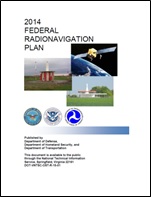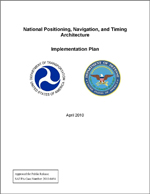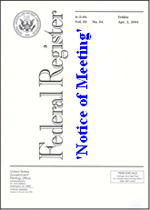 October 14, 2016, The purpose of this notice is to inform the public that the U.S. Department of Transportation hosted its fifth workshop on the Global Positioning System (GPS) Adjacent Band Compatibility Assessment effort.
October 14, 2016, The purpose of this notice is to inform the public that the U.S. Department of Transportation hosted its fifth workshop on the Global Positioning System (GPS) Adjacent Band Compatibility Assessment effort.
The purpose of this workshop was to discuss the results from testing of various categories of GPS/Global Navigation Satellite System (GNSS) receivers to include aviation (non-certified), cellular, general location/navigation, high precision and networks, timing, and space-based receivers. The workshop also included a discussion on the development of use-case scenarios for these categories.
DATE/TIME: October 14, 2016 / 10 a.m. - 4 p.m. (Eastern Daylight Time).
LOCATION: RTCA, Inc., 1150 18th ST NW, Suite 910, Washington, DC 20036.
FOR FURTHER INFORMATION CONTACT: Stephen M. Mackey, U.S. Department of Transportation, John A. Volpe National Transportation Systems Center, V-345, 55 Broadway, Cambridge, MA 02142,Stephen.Mackey@dot.gov, 617-494-2753
Reference: Presentations GPS Adjacent Band Compatibility Assessment Workshop V
GPS ADJACENT BAND COMPATIBILITY ASSESSMENT ADDITIONAL TESTING
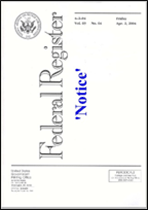 July 7, 2016, SUMMARY: The Department of Transportation, through the Office of the Assistant Secretary for Research and Technology (OST-R), is providing notice to the public that it will conduct additional testing of Global Positioning System/Global Navigation Satellite System (“GPS/GNSS”) receivers this July as part of the DOT Adjacent Band Compatibility Study (“the Study”). The goal of the Study is to evaluate the adjacent radio frequency band power levels that can be tolerated by GPS/GNSS receivers, and advance the Department's understanding of the extent to which such power levels impact devices used for transportation safety purposes, among other GPS/GNSS applications. In April 2016, radiated testing of GNSS devices took place in an anechoic chamber at the U.S. Army Research Laboratory at the White Sands Missile Range (WSMR) facility in New Mexico.
July 7, 2016, SUMMARY: The Department of Transportation, through the Office of the Assistant Secretary for Research and Technology (OST-R), is providing notice to the public that it will conduct additional testing of Global Positioning System/Global Navigation Satellite System (“GPS/GNSS”) receivers this July as part of the DOT Adjacent Band Compatibility Study (“the Study”). The goal of the Study is to evaluate the adjacent radio frequency band power levels that can be tolerated by GPS/GNSS receivers, and advance the Department's understanding of the extent to which such power levels impact devices used for transportation safety purposes, among other GPS/GNSS applications. In April 2016, radiated testing of GNSS devices took place in an anechoic chamber at the U.S. Army Research Laboratory at the White Sands Missile Range (WSMR) facility in New Mexico.
The Study provides for testing categories of receivers that include aviation (non-certified), cellular, general location/navigation, high precision and networks, timing, and space-based receivers. Approximately twelve receivers, representing each of these receiver categories, will be selected for additional testing from those receivers tested in April. More
FOR FURTHER INFORMATION CONTACT: Stephen Mackey at the DOT/OST-R Volpe National Transportation Systems Center at stephen.mackey@dot.gov or 617-494-2753.
DOT GPS ADJACENT BAND TESTING AND REQUEST FOR VOLUNTARY PARTICIPATION
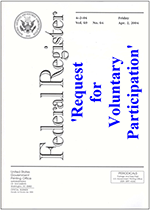 March 3, 2016 - Summary: The Department of Transportation, through the Office of the Assistant Secretary for Research and Technology (OST-R), will begin testing Global Positioning System/Global Navigation Satellite System (“GPS/GNSS”) receivers this April pursuant to the DOT Adjacent Band Compatibility Study (“the Study”) test plan published with this notice. Device testing will take place at the U.S. Army Research Laboratory at the White Sands Missile Range (WSMR) facility in New Mexico.
March 3, 2016 - Summary: The Department of Transportation, through the Office of the Assistant Secretary for Research and Technology (OST-R), will begin testing Global Positioning System/Global Navigation Satellite System (“GPS/GNSS”) receivers this April pursuant to the DOT Adjacent Band Compatibility Study (“the Study”) test plan published with this notice. Device testing will take place at the U.S. Army Research Laboratory at the White Sands Missile Range (WSMR) facility in New Mexico.
The Study provides for testing categories of receivers that include aviation (non-certified), cellular, general location/navigation, high precision, timing, networks, and space-based receivers. DOT seeks to include a broad range of devices used in rail, aviation, motor vehicle, maritime, and space transportation safety systems, among a number of other applications of GPS/GNSS. The goal of the Study is to evaluate the adjacent radiofrequency band power levels that can be tolerated by GPS/GNSS receivers, and advance the Department’s understanding of the extent to which such power levels impact devices used for transportation safety purposes, among other GPS/GNSS applications. More
Reference: DOT Adjacent Band Compatibility Assessment Test Plan
Reference: United States Department of Transportation Non-Disclosure Agreement (NDA)
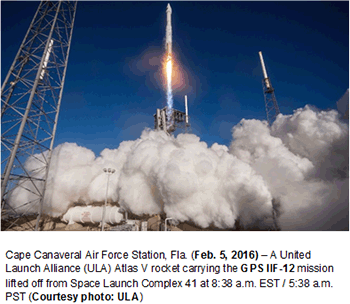 February 5, 2016 - LOS ANGELES AIR FORCE BASE - EL SEGUNDO, Calif. -- The U.S. Air Force and its mission partners successfully launched the 12th Boeing-built Global Positioning System GPS IIF satellite aboard a United Launch Alliance Atlas V Evolved Expendable Launch Vehicle from Space Launch Complex 41, Cape Canaveral Air Force Station, Fla. at 8:38 a.m. EST (5:38 a.m. PST)
February 5, 2016 - LOS ANGELES AIR FORCE BASE - EL SEGUNDO, Calif. -- The U.S. Air Force and its mission partners successfully launched the 12th Boeing-built Global Positioning System GPS IIF satellite aboard a United Launch Alliance Atlas V Evolved Expendable Launch Vehicle from Space Launch Complex 41, Cape Canaveral Air Force Station, Fla. at 8:38 a.m. EST (5:38 a.m. PST)
"Today's launch is a significant achievement in the history of GPS, as we launch the last of the GPS IIF satellites to be delivered on-orbit," said Lt. Gen. Samuel Greaves, Space and Missile Systems Center commander and Air Force program executive officer for space. More
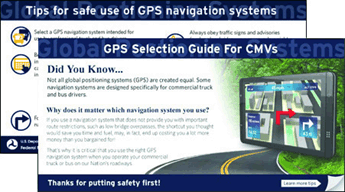 Choosing the Right GPS Navigation Device for Commercial Motor Vehicles
Choosing the Right GPS Navigation Device for Commercial Motor Vehicles
March 11, 2013, US DOT Federal Motor Carrier Safety Administration (FMCSA) in conjunction with U.S. Senator Charles E. Schumer (NY) announced an effort to publicize that not all GPS navigation devices are created equal and that some navigation systems are designed specifically for commercial truck and bus drivers.
Why does it matter which navigation system you use?
If you use a navigation system that does not provide you with important route restrictions, such as low bridge overpasses, the shortcut you thought would save you time and fuel, may, in fact, end up costing you a lot more money than you bargained for… More
Resources
 |
| GPS Block IIR-M: Replenishment satellite design with Modernized features |

